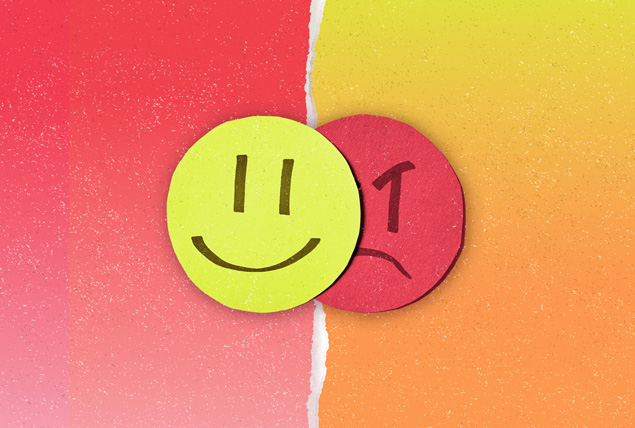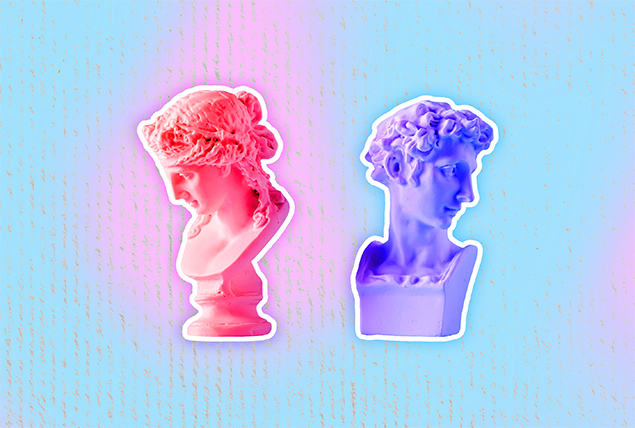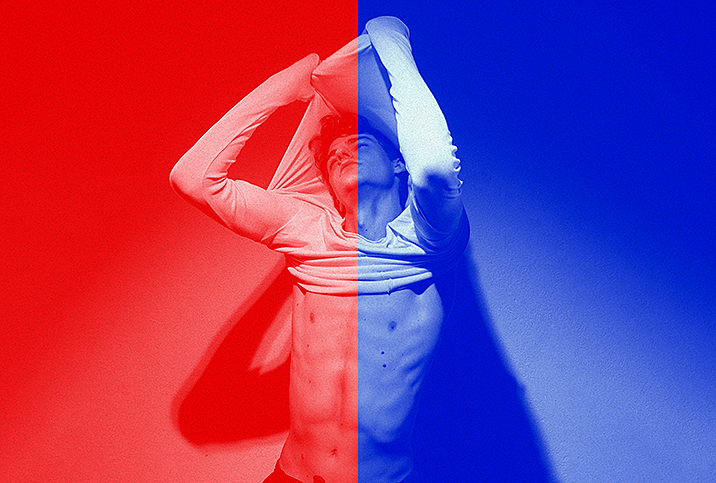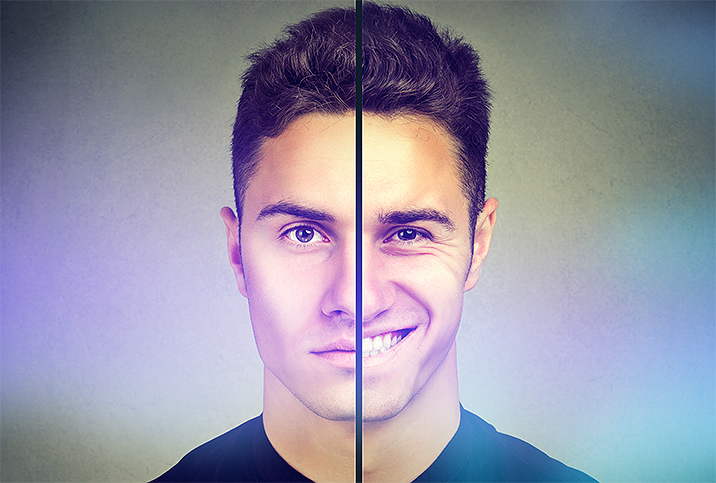Identifying the Symptoms of Bipolar Disorder Before It’s Too Late

Key Points
- Roughly 5.7 million Americans are diagnosed with bipolar disorder every year.
- Bipolar disorder is a chronic mental health condition that usually requires lifelong treatment.
- With the right treatment, people with bipolar disorder can lead full lives.
If you have bipolar disorder, you will notice changes in your behavior, energy, sleep and thinking. This mental disorder is characterized by wide mood swings, from high to low.
In recent years, there have been many high-profile celebrities. The celebrities living with bipolar mood disorder, including Demi Lovato, Kanye West, Mariah Carey, Russell Brand and Selena Gomez.
What are the manic symptoms of bipolar disorder?
People with bipolar disorder experience extreme changes in mood, or episodes, such as mania, hypomania, depression and even mixed episodes. Both manic and hypomanic episodes include three or more of the following symptoms.
Euphoric and irritable mood
Those who experience these moods alternate between intense happiness and anxiety or agitation.
"The patient feels increased activity, energy or agitation. They also experience an abnormal optimism and intensity of the ideas they need to communicate," said Remedios Gutiérrez Rodríguez, a psychoanalytic psychiatrist and member of the CEAP Scientific Association in Spain.
Decreased sleep
More than 90 percent of those with bipolar disorder decrease their need for sleep and reduce their total sleep time. In many cases, a vicious circle is established between less sleep and more agitation.
Exaggerated self-esteem and feelings of grandiosity
Often, patients in mania or hypomania overestimate their own abilities and feel exaggeratedly powerful.
"Subjects have very high self-esteem and believe they can do everything. Convinced that they have no personal limits, they tend to fall into impulsive behaviors, without filters or control," Gutiérrez Rodríguez said.
Increased sex drive
Mania can also lead to risky sexual behaviors, leading to intimate activity that is compulsive in nature. Desire increases equally in men and women.
Hyperactivity
The hyperactive patient feels extreme restlessness, can be impulsive and excessively talkative.
Psychotic symptoms
During the manic phase, those with bipolar disorder may experience symptoms of psychosis, such as delirium.
Recommended
- The Facts About Bipolar Disorder: Find out how bipolar disorder affects your sexual health.
- It's 2024 and We're Still Living With COVID-19: New vaccines battle with new variants and, yes, you still need to be vaxed for COVID-19.
- Inherited Risk: What to Know About the BRCA Gene: If you have a mutation passed down by a parent, you may have a higher chance of getting cancer.
What are the depressive symptoms of bipolar disorder?
Depression can be understood as the reverse side of mania, or the lows compared to the highs of mania. This type of episode includes at least five of the following symptoms.
Depressed mood
Someone with bipolar disorder may experience despondency, hopelessness, feelings of emptiness and worthlessness and great suffering.
Lack of interest
Depression can include losing the illusion and motivation for carrying out day-to-day activities, hobbies and even relationships or affections.
Sleep disturbances
Many patients present marked sleep disorders, such as poor sleep efficiency, insomnia and hypersomnia (excessive sleepers).
Loss of energy
The patient may feel a drop in energy and strength. Often, thoughts, interactions and movements can become very slow.
Psychomotor agitation
Some depressed people experience an avalanche of agitation, accompanied by nervous, abrupt and unexpected movements.
Other forms of depression
"Among other symptoms are loss or increase of appetite, feelings of worthlessness and guilt, social isolation, moodiness, somatization, difficulty in making decisions, decreased sexual desire, thoughts of death and suicidal ideas," said Eglée Iciarte Lavieri, psychiatrist and former associate professor at the University of Alcalá, Spain.
What are the causes of bipolar disorder?
An estimated 2.8 percent of the population in the United States has experienced symptoms of bipolar disease in the past year. The prevalence is about the same for women and men.
The causes of bipolar disorder are not yet fully understood.
"In general, it's believed that genetic factors, biological factors and certain risk factors interact at different levels to influence the development of this mood disorder," Iciarte Lavieri said.
Genetic factors
"Like other mental illnesses, bipolar disorder is considered a hereditary condition," Iciarte Lavieri said. "It is estimated that in more than half of registered cases, the genetic component prevails."
When both parents experience bipolar disorder symptoms, the risk of a descendant inheriting the condition increases up to 40 percent.
Biological factors
Specialists consider that bipolar disorder is caused in part by an underlying problem in the limbic system, which is in charge of regulating emotional reactions and giving certain stability to the mood.
Bipolar disorder is known to involve an imbalance in neurotransmitters, or chemicals that help brain cells communicate.
Risks and triggers
The following factors do not cause bipolar disorder but may contribute to the triggering of an episode.
Sleep
For bipolar patients, sleep dysregulation can be potentially dangerous. For example, poor sleep—caused by disrupting normal sleep patterns from jet lag—can lead to intense mood swings.
Stressful life events
In many subjects, a stressful or negative event can precipitate an episode.
The most common life stressors include the onset of a medical problem, a breakup with a romantic partner or friend, job stress, traumatic experiences, feeling isolated or the death of a loved one.
Seasonal changes
An estimated 25 percent of people with bipolar disorder experience mood fluctuations when the weather changes, indicated a 2020 review.
Seasonal depressive disorder, or SAD, occurs in people with or without bipolar disorder. But the changes in weather can prove especially triggering to those with bipolar disorder.
"Spring and summer seasonal changes are related to manic or hypomanic episodes, while autumn and winter seasonal changes are traditionally associated with depressive episodes," Gutiérrez Rodríguez said.
Drug and alcohol use
The consumption of alcohol and other toxic substances can be a potent trigger. It is estimated that 60 percent of those with bipolar disorder had a lifetime history of any drug or alcohol use disorder, suggested a 2007 report.
Menstrual cycle and pregnancy
More than 60 percent of women with bipolar disorder report mood changes related to the menstrual cycle, suggested a 2003 report.
In addition, the risk of episodes increases during pregnancy or within 12 months after birth. Both mothers and fathers with this disease may suffer episodes provoked by childbirth.
Goal achievement
Events such as getting a promotion at work—or even something seemingly relaxing, such as going on vacation—can become stressors.
Medication omission
The most sensitive risk factor reported is treatment abandonment.
If you feel that the medication you are taking is not working as you'd like, talk to your healthcare provider for a medication review.
Diagnosis and tests
Bipolar disorder is usually diagnosed primarily through a meticulous behavioral assessment. Clinical strategies include the following:
Physical examination
The primary care physician may perform a physical examination and laboratory tests to rule out other illnesses. It should be noted that there are no specific blood tests or brain scans to diagnose bipolar disorder.
Psychiatric evaluation
Once other conditions have been ruled out, the primary care physician will refer the case specifically to a mental health professional. For a more accurate diagnosis, a psychiatrist will likely inquire into the following aspects:
- Medical history. An examination of your symptomatology, family history and life experiences will be carried out.
- Information from the immediate environment. All patients will be carefully evaluated for mania or hypomania.
"On some occasions, it is advisable to consult directly with the family," Iciarte Lavieri said. "With the patient's permission, the specialist may interview family members or close friends for them to provide key information."
Criteria for bipolar disorder
A psychiatrist will compare findings with a set of official criteria established by the American Psychiatric Association to arrive at a diagnosis.
When to seek help and who to see
Knowing when medical help is required is not always an easy task because not everyone with this disease is fully aware of the extreme changes they experience.
"Help should be sought when a person observes mood alterations that persist or recur, whether they are depressive or euphoric symptoms," Gutiérrez Rodríguez said.
However, because some phases of this disease can feel "good," family and friends may need to gently intervene.
Who can you turn to for a diagnosis? In most cases, the first point of contact is with a primary care physician. This healthcare professional can then refer the patient to a psychiatrist.
What happens if bipolar disorder goes undiagnosed?
If left untreated, this mood disorder usually worsens.
"Without diagnosis and specialized care, symptoms become more complicated, aggravated and the risk of suicide increases," Gutiérrez Rodríguez said.
"People who do not receive treatment will have serious difficulties in their day-to-day lives. Their quality of life will be significantly impaired. Bipolar disorder does not get better on its own," Gutiérrez Rodríguez finished.


















